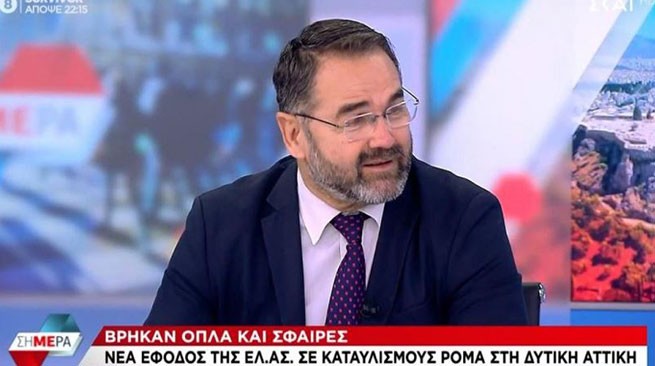The Gulf countries are switching to payments in yuan for oil, which weakens the position of the petrodollar and changes global financial flows.
16th meeting BRICS will be held this year in Kazan, Russia, from October 22 to 26. One of the main topics of discussion will be the new currency that is being worked on BRICS.
It is expected that this meeting will become a landmark and will bring unexpected results. This year by BRICS Five new members joined: Saudi Arabia, the United Arab Emirates, Iran, Egypt and Ethiopia.
These countries change the weight significantly BRICS both economically and energetically. For example, Saudi Arabia and the UAE together produce more than 18 million barrels of oil per day, which is about 20% of global supply. Saudi Arabia in particular took part in the mBridge digital currency project, which was a major event this year.
In addition, Saudi Arabia announced its readiness to use Chinese yuan instead of US dollarwhich sparked discussions on the topic “Petroyuan“. To understand the essence Petroyuan and its potential, it is important to first understand the concept petrodollar.
Petrodollar: history and fall
After the Yalta Conference in 1945, US President Franklin D. Roosevelt met with King Ibn Saud of Saudi Arabia. They entered into a secret agreement under which the United States pledged to provide military security to Saudi Arabia in exchange for safe access to its oil. At that time, Saudi Arabia controlled 25% of the world's oil reserves, making it a key partner for the United States.
This agreement lasted for almost a quarter of a century, until 1971, when the “Nixon shock” occurred. As a result of the economic crisis, President Richard Nixon abandoned the dollar's peg to gold, effectively destroying the Bretton Woods system. To prevent the dollar from falling, Nixon negotiated a new agreement with Saudi Arabia that would sell all its oil for dollars in exchange for arms and protection.
This agreement strengthened the demand for the dollar around the world and led to the creation of the “petrodollar.” For example, by the 1980s, more than 80% of global oil trade was carried out in US dollars. The strategic partnership between the United States and Saudi Arabia continued until recent years. Today, Saudi Arabia ranks fourth in the world in military spending, which exceeds 10% of its GDP—more than $80 billion a year.
However, in the last 10 years, China, having become one of the largest oil consumers in the world, has begun to change the balance of power in the energy market.
The Rise of the Petroyuan
In March 2018, China took the first step towards creating Petroyuan, as an alternative to the petrodollar. In China, oil futures began trading in yuan. Although trading volume remained low initially—only $24.4 billion in the first year—by 2023, trading volume in yuan oil contracts exceeded $100 billion. This became possible thanks to the active development of financial ties between China and Russia, as well as an increase in the number of offshore transactions in yuan.
In addition, China and Russia have strengthened their trade relations, and now more than 80% of Russia's exports to China are paid in yuan, which increases the circulation of the Chinese currency on the world market. An important step was the transition to payments in yuan as part of the One Belt, One Road initiative, which involves dozens of countries.
A historic step was the statement by the Minister of Saudi Arabia about his readiness to accept yuan for oil sales to China, as well as participation in the mBridge digital currency project. This event can be seen as the actual end of an era petrodollar.
Gulf countries ready to trade oil for yuan
Besides Saudi Arabia, several Gulf countries are also considering trading oil for yuan:
- United Arab Emirates (UAE) — the country actively cooperates with China and is part of the “One Belt, One Road” initiative. In 2022, the UAE began to consider using the yuan for settlements in energy trade, especially with China. The UAE's oil production is around 3 million barrels per day, making the country one of the world's largest oil suppliers. The UAE ranks 6th among the largest oil exporters and has a market share of about 4%.
- Qatar— Qatar is also showing interest in yuan payments as part of its expanding cooperation with China. The country produces about 1.5 million barrels of oil per day, accounting for 2% of global supply. Qatar is investing heavily in its energy projects and strengthening ties with China, which is the largest buyer of its oil and natural gas.
- Iran— Iran has long sought to reduce its dependence on the dollar due to US sanctions. The country actively uses the yuan and is considering the possibility of expanding payments in this currency for oil and gas exports. In 2023, Iran produced about 3.2 million barrels of oil per day and ranks 5th in global oil exports. Iran and China are strengthening their economic ties, and China is the largest buyer of Iranian oil, providing 30% of Iranian exports.
These countries, along with Saudi Arabia, are ready to gradually switch to the yuan in payments for oil, which strengthens the position of the yuan in the international arena.
Obstacles along the way are resolved
In the system Petroyuan Large oil importers may face the problem of not having enough yuan for payments. However, this problem is becoming less acute given that the share of China's cross-border transactions in yuan has risen to 53%. Fifteen years ago, 83% of such transactions were made in dollars, but today – only 43%. More than 80% of Russia's exports to China are also paid for in yuan, which contributes to the growth of the currency in the market.
In addition, many swap agreements will be concluded in the coming years to meet the demand for the yuan. Already today, China has concluded swap lines with more than 30 countries, including Russia, Argentina, Pakistan and others.
Creation of a digital currency system
The mBridge project under the auspices of the Bank for International Settlements (BIS) can help Western-influenced countries meet their need for the yuan. This project uses central bank digital currencies to replace the old correspondent settlement system. It is known that correspondent banks working with the SWIFT system are completely controlled by the United States and Western countries.
Thus, decisions of Western countries can block the work of correspondent banks and paralyze the SWIFT system. The mBridge project allows the central banks of China, Hong Kong, UAE, Thailand and Saudi Arabia to make instant settlements outside the control of SWIFT and the US. For example, as of 2023, mBridge has processed more than $22 billion in transactions.
Rising demand for yuan
Oil exporting countries are expected to begin accumulating the yuan in their reserves. After 2020, China has taken steps to simplify and deepen RMB financial transactions. It's important to note that The yuan is part of the IMF's basket of reserve currencies (SDR), which makes it more attractive for accumulation. The yuan's share in the SDR basket is 12.28%, second only to the dollar and euro.
China's control over the offshore yuan protects the currency from excessive fluctuations and contributes to its stability, which also supports its role as a reserve currency.
With the increased use of the petro-yuan, Chinese banks will be able to make significant profits from arbitrage between oil trades in yuan and dollars. This will have a positive impact on financial institutions working with China.
Accelerating dollar decline
In conclusion, to those who underestimate BRICS And petroyuanas well as those who consider Western economic hegemony to be unshakable, will have to recognize the changes that are taking place. On the one hand, BRICS creates a powerful economic union, paving the way for dollar-free trade. On the other hand, the petrodollar, which played a key role in strengthening the dollar, received a serious blow from the initiative Petroyuan. According to economists, in the coming years the share of the dollar in world reserves may decline to 50% or lower, which will accelerate its loss of influence on the global stage.
Author's opinion: inAll empires and monopolies collapse sooner or later. All construction projects are being completed. Even children know this.







More Stories
In Malaysia, a giant crocodile ate a six-year-old girl
Suspicion of Marburg virus in a student in Hamburg was not confirmed
Nuclear race: USA, Russia, France and China – who is ahead in the world of nuclear energy